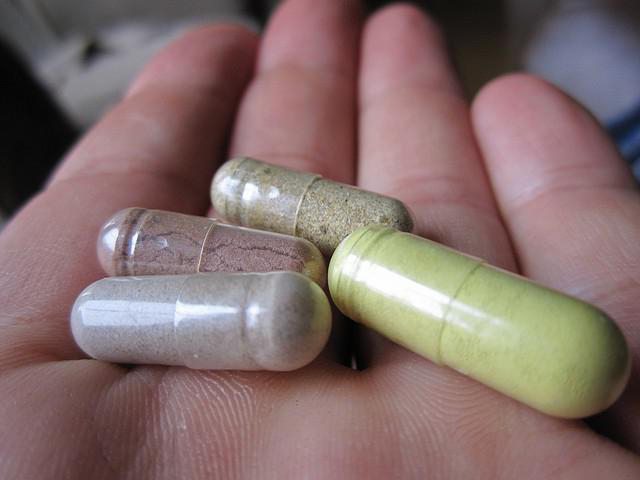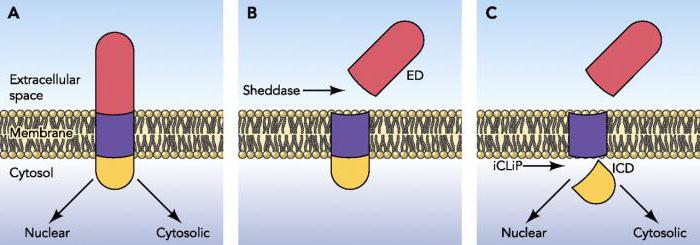All about the enzyme pepsin
In this article we will talk about the indispensablean enzyme located in the stomach of each mammal, including a human. General information about the pepsin enzyme, information on its isomers and the role of the substance in digestion processes will be considered.
General views
First, let's find out which class of enzymes pepsin belongs to. This will allow you to better understand the topic itself.
The enzyme pepsin refers to hydrolasesproteolytic class and is produced by the gastric mucosa, and its main task is the cleavage of proteins supplied with food products to peptides. Pepsin is an enzyme that breaks down proteins in an acidic environment. It is produced by the organisms of all mammals, and also reptiles, representatives of the class of birds and many fish.

The enzyme represented refers to proteinsglobular type, has a molecular weight of approximately 34,500. The molecule itself is represented as a polypeptide chain and consists of three hundred forty amino acids. In its composition also contains HPO3 and three disulfide bonds.

Pepsin is widely used in medical practice andcheese making. In laboratories it is used for the purpose of more detailed study of protein compounds, namely, the primary protein structure. Pepsin has a natural inhibitor - pepstatin.
Variety of enzyme
Pepsin has twelve isoforms. Differences between all isomers of pepsin are in the electrophoretic motor ability, inactivation conditions, proteolytic activity. The cipher of pepsin is CF 3. 4. 23. 1.
The person in the stomach juice contains seven kinds of pepsin, and five of them sharply diverge in some qualities:
1. Pepsin itself (A) has a maximum activity in the medium pH = 1.9, and when it is raised to 6 it is inactivated.
2. Pepsin 2 (B) is maximally active in the medium pH = 2.1.
3. Type 3 shows the highest degree of activity at pH = 2.4-2.8.
4. Type 5, also known as gastricin, has the highest activity at pH = 2.8-3.4.
5. Type 7 with pH values of 3.3-3.9 has the highest activity.
The value of the enzyme in digestion
Pepsin is secreted by the gastric glands indeactivated form (pepsinogen), and the work of the enzyme is activated by hydrochloric acid. Under its influence, it passes into a workable form. An essential condition for the activity of the enzyme pepsin is the presence of an acidic medium, which is why, during the passage of pepsin into the duodenum, it loses its activity, since in the intestine the medium is alkaline. The enzyme pepsin is one of the key roles in the digestion of the entire class of mammals, and in particular humans. This substance cleaves food proteins to smaller peptide chains and amino acids.
In men and women, the rates of production of thisenzyme are different. Men have about twenty to thirty grams of pepsin per hour, while a woman has twenty to thirty percent less. The main cells, places of pepsin production, allocate it in the non-working form of pepsinogen. After cleavage of a certain amount of peptides from the N-terminal end, pepsinogen becomes active. Hydrochloric acid acts as a catalyst in this reaction of chemical transformations. Pepsin has protease and peptidase properties and is responsible for the disaggregation of proteins.
Therapeutics

In medicine, pepsin is widely used as adrug in certain diseases associated with a lack of production of this enzyme in the patient's stomach. Obtain a rennet pepsin from the porcine mucous membranes of the stomach. The drug is available in the form of tablets, spread out on blisters, with an admixture of acidol or in the form of powders. Pepsin is a part of some combined medicines. Has ATS-code A09AA03. An example of a pathology in which pepsin-containing medicines is prescribed is Menetriae's disease.
Beef pepsin is ...
Rennet pepper beef rennet is one of theknown and most frequently used forms of this substance. The enzyme itself is produced in the fourth calf stomach. The preparation used in production is formed by two enzymes: pepsin and chymosin in natural proportional amounts. Used rennet enzyme in cheese making, and its main functions - the formation of a clot of milk and participation in the process of maturation of cheese and curd products.

Beef pepsin is isolated from the stomachs of largecattle and in the manufacture of products for sale, there are two stages of cleansing the enzyme from fat and impurities that are insoluble. The process of making beef pepsin goes through several stages: the extraction process, salting out and freeze drying.
Other applications
The enzyme pepsin is added to the starter. Also it is used in cheese making. The rennet pepsin enzyme paired with chymosin forms the enzyme used to fold the milk.

The process of folding milk is calledprotein coagulation, namely casein, to form a gel on a dairy basis. Casein has a specific strand, and only one peptide bond is responsible for the enzymatic type of coagulation of the protein itself. Complex pepsin with chymosin proper and responsible for breaking the very link and leads to the folding of milk.
Conclusion
Summing up, we can say that this isbiological active substance is one of the most important enzymes involved in the digestion of food in the stomach in representatives of many classes of living things. In production and medicine, the substance is mainly used as a medicine and is added to the rennet enzyme for the production of dairy products.







